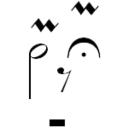Yahoo Answers is shutting down on 4 May 2021 (Eastern Time) and the Yahoo Answers website is now in read-only mode. There will be no changes to other Yahoo properties or services, or your Yahoo account. You can find more information about the Yahoo Answers shutdown and how to download your data on this help page.
What is the reasoning behind dominant chords for the I and IV in blues music?
Let's take an example in the key of C, where normally, the chords constitute C, Dm, Em, F, G, Am, and B diminished.
In, blues, something extra is added. They're normally not just C, F, and G. They're seven chords (or extensions).
C = C E G
F = F A C
G = G B D
In blues, they're extended into dominant chords. G7 if the natural dominant in C major, but in blues, the minor 7th note is also added to C and F chords, making them dominants.
C7 (C, E, G, and B-flat) comes from C mixolydian scale/F major)
F7 (F, A, C, E-flat) comes from the C dorian scale/F mixolydian/B-flat major).
C major isn't meant to naturally accomodate sharp or flay keys, but somehow, in blues, the C and F chords (B-flat note and E-flat notes respectively) are added to make them dominants.
What is the history behind the dominant chords in blues.
BONUS (my opinion): Since the tonic major of blues is mainly a dominant 7th, I think "major" blues (C) should have the mixolydian time signature. This is also logical IMO because G7 is sometimes heard in C mixolydian's relative major, F, as a dominant of the dominant chord and that in F major, F7 is also used to resolve to a B-flat.
4 Answers
- pianomanLv 71 year ago
There is a scale referred to as the blues scale. It contains a lowered third, seventh, and sometimes fifth. I'm not sure what you mean by dominant chords. The V is the dominant and the IV is the sub-dominant.
- ?Lv 71 year ago
Eric Clapton once said that the day he realized that you don't gotta "suffer if ya wanna sing the blues" and that it's just a musical form, was the day he kicked drugs and his playing took off. Just sayin'
- MordentLv 71 year ago
Because the blues scale uses
C D Eb E F Gb G A Bb B
It is decatonic, not heptatonic like western majors and minors.
Because the scale features Bb we can use it with C to make C7, and because it features Eb we can use it with F to make F7 (or because the chords feature those notes they're in the scale - chicken and egg).
So why? Because it is an equal temperament imitation of a scale that is IMPOSSIBLE to play with fixed pitch instruments like the guitar and piano. Blues singers - who can sing microtones, i.e notes 'in between the notes', such as the 'neutral 3rd'. This is somewhere between the major and minor third. It's not E OR Eb, but Eb is perhaps the best approximation. Microtonal singing (the 'blue notes') is common in Africa, so the slaves would have used it in their music, and in their interpretations of western folk songs too.
Standard practice theory only works for the things it was designed to be used on. It breaks down when used to analyse Indian or Chinese classical music, or even non-functional harmony. Similarly the blues is *just* different enough that the rules don't always apply. Don't be surprised if you use the wrong tool for the job and find that it doesn't behave how you expect it to.
- Michael ELv 71 year ago
The last I heard, the blues was't about theory.
Fun fact, Lead Belly never played an A min chord in his life. He'd sing in A min, but play in A maj.




